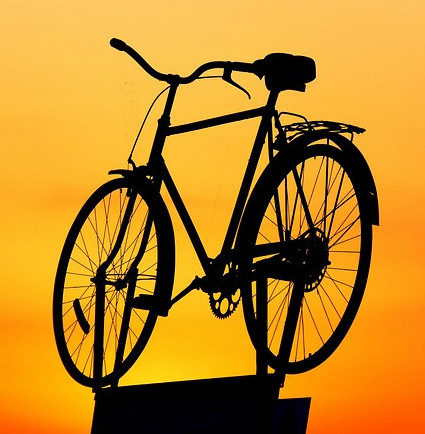When choosing an electric bike, you will come accross a variety of specifications that can seem confusing. This can make comparing different bikes difficult. Here are some of the most common specs and their meanings.
Bicycle Handlebars:
There are several types of bicycle handlebars available, each with its own design and intended purpose. Here are some common types of bicycle handlebars:
Drop Bars: Drop bars are commonly found on road bikes and are designed to provide an aerodynamic riding position. They have a curved shape that extends forward and downward, allowing the rider to lean forward and reduce wind resistance. Drop bars offer multiple hand positions, including the tops, hoods, and drops, providing versatility for long rides and varied terrain.
Flat Bars: Flat bars are straight across and typically found on mountain bikes, hybrid bikes, and commuter bikes. They offer a more upright riding position, which provides better control and visibility in off-road or urban environments. Flat bars are often wider than drop bars, giving riders more stability and control over rough terrain.
Riser Bars: Riser bars are similar to flat bars but have a slight upward sweep at the ends. This design provides a more comfortable and relaxed riding position while still offering good control. Riser bars are commonly seen on mountain bikes and are suitable for off-road trails and recreational riding.
Aero Bars: Aero bars, also known as triathlon or time trial bars, are primarily used in competitive cycling and triathlons. These handlebars extend forward from the main handlebar and allow the rider to adopt a highly aerodynamic position by resting their forearms on padded armrests. Aero bars are intended for high-speed riding and are not suitable for regular commuting or general cycling.
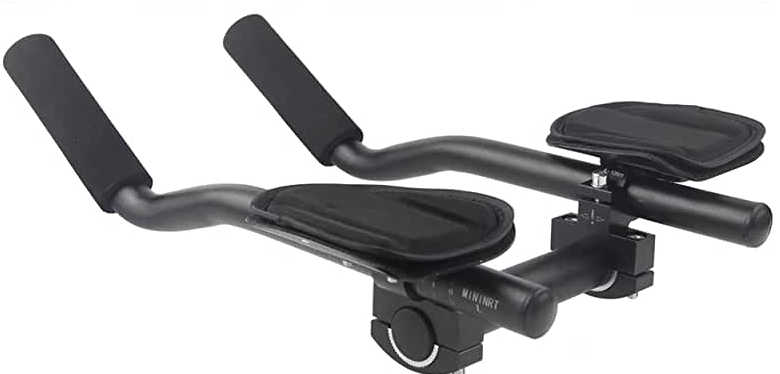
Cruiser Bars: Cruiser bars, also called swept-back or beach cruiser bars, have a relaxed and upright riding position. They are wide and curved backward, allowing the rider to sit in a comfortable and leisurely posture. Cruiser bars are often found on cruiser bikes and city bikes, providing a relaxed and enjoyable riding experience.
BMX Bars: BMX bars are commonly used on BMX bikes and are designed for tricks, jumps, and stunts. They are typically wider and have a strong, durable construction to withstand the rigors of aggressive riding. BMX bars have a variety of styles, including the classic “M” shape or taller and wider “riser” bars.
Bullhorn Bars: Bullhorn bars have a minimalistic design and are characterized by their forward-extending horns. They offer a more aerodynamic riding position than flat bars while still allowing multiple hand positions. Bullhorn bars are popular among urban fixed-gear riders and bike messengers.
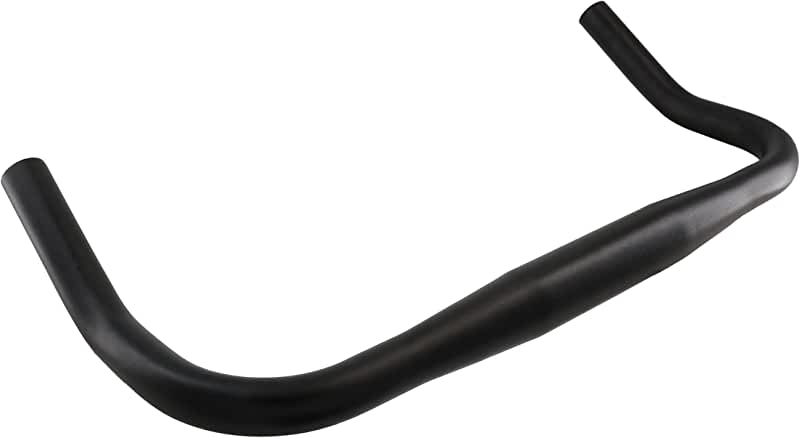
Moustache Bars: Moustache bars, also known as trekking bars or butterfly bars, have a unique shape that resembles the handlebars of a moustache. They provide multiple hand positions, including a more upright and comfortable grip area on the outer edges. Moustache bars are suitable for long-distance touring and commuting, offering a range of hand positions for different riding conditions.
This is not an exhaustive list. It’s important to note that there are variations and hybrid designs that combine elements of different handlebar types. The choice of handlebars depends on personal preference, riding style, and the intended use of the bicycle.
Brakes:
There are several common types of bicycle brakes, each with its own characteristics and advantages. Here are some of the most widely used brake types:
Rim Brakes (You won’t find this type of brake on many electric bikes):
This type of brake applies friction to the wheel hub.
Caliper Brakes: Caliper brakes are a common type of rim brakes found on road bikes and some hybrid bikes. They use a pair of calipers to squeeze the brake pads against the sides of the wheel rims, creating friction and slowing down the bike.
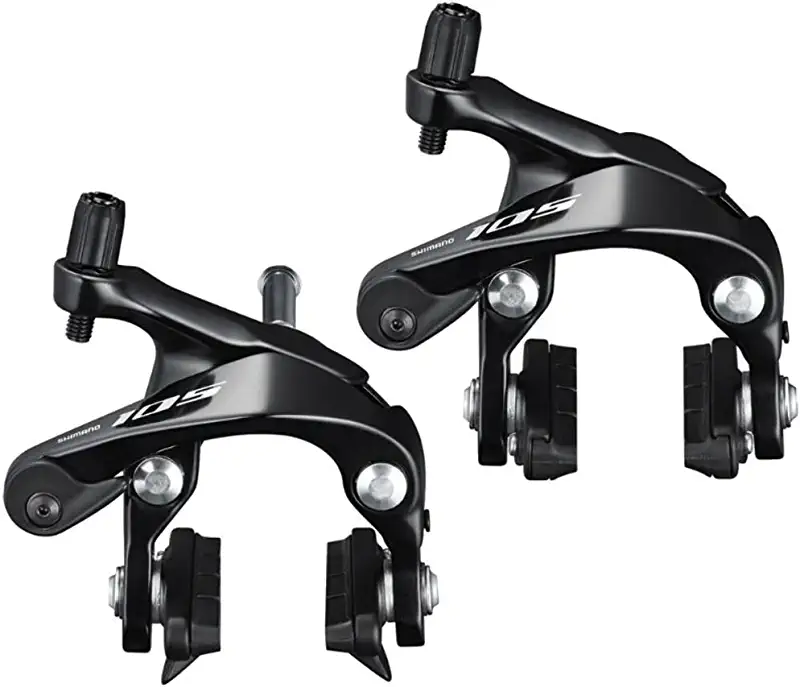
Cantilever Brakes: Cantilever brakes are often used on cyclocross bikes and some older mountain bikes. They have two separate brake arms attached to the frame or fork, and the brake pads are pulled towards the rim when the brake lever is squeezed.
Disc Brakes (The most common type):
This type of brake exerts friction against a disc rotor attached to the wheel hub.
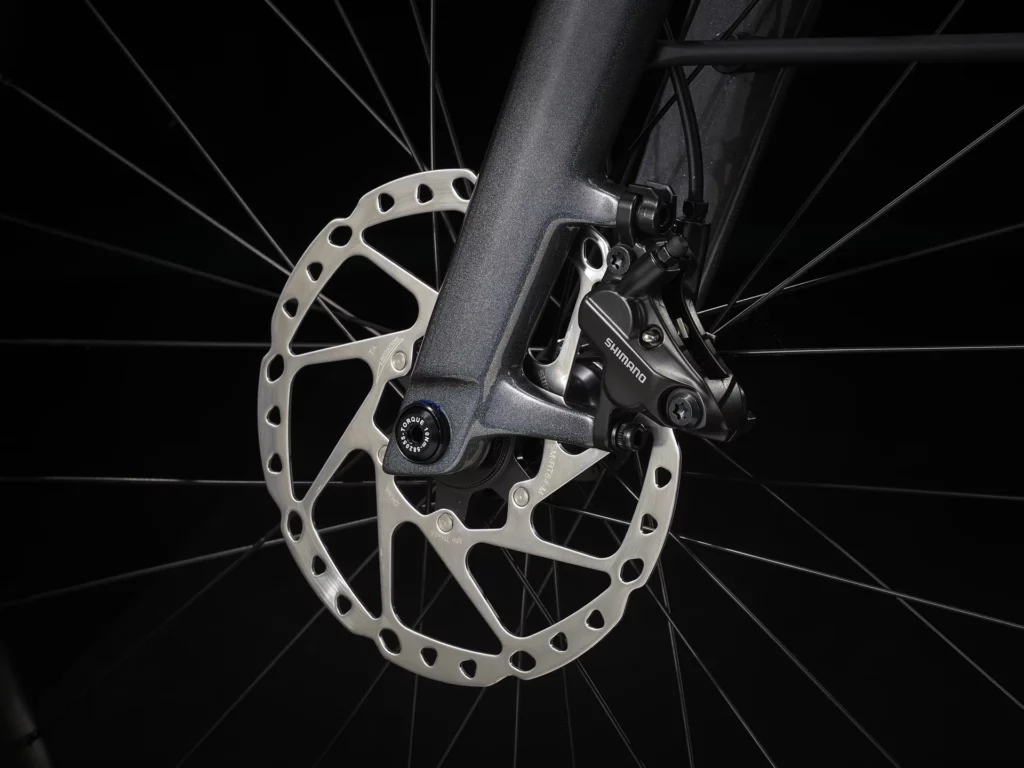
Mechanical Disc Brakes: Mechanical disc brakes use a cable to actuate the braking mechanism. They are commonly found on entry-level mountain bikes, hybrid bikes, and some road bikes. The braking force is applied by the calipers squeezing the disc rotor. They are less expensive than hydraulic disk brakes and generally easier to install.
Hydraulic Disc Brakes: Hydraulic disc brakes are considered more advanced and offer stronger and more consistent braking performance. They use hydraulic fluid to transmit the force from the brake lever to the calipers, providing better modulation and requiring less hand effort to apply the brakes. Hydraulic disc brakes are commonly found on higher-end mountain bikes, road bikes, and some hybrid bikes. This type of brake is a bit harder to install and may require “bleeding” periodically to remove trapped air. As in most hydraulic systems, air in the circuit can significantly reduce hydraulic power and this effectiveness.
Drum Brakes:
Internal Hub Brakes: Internal hub brakes, also known as drum brakes, are enclosed within the bicycle’s hub, typically on the rear wheel. They offer reliable all-weather performance and require less maintenance compared to rim and disc brakes. Internal hub brakes are commonly found on commuter bikes and city bikes.
Coaster Brakes:
Coaster brakes, also known as back-pedal brakes, are commonly found on cruiser bikes and some children’s bikes. The braking mechanism is integrated into the rear hub, allowing the rider to slow down or stop the bike by pedaling backward. Coaster brakes provide a simple and intuitive braking solution, especially for casual riding.
It’s worth noting that different brake types have different advantages in terms of modulation, power, maintenance requirements, and compatibility with specific types of bicycles. The choice of brake type often depends on the intended use of the bike, rider preferences, and budget considerations.
Cassettes:
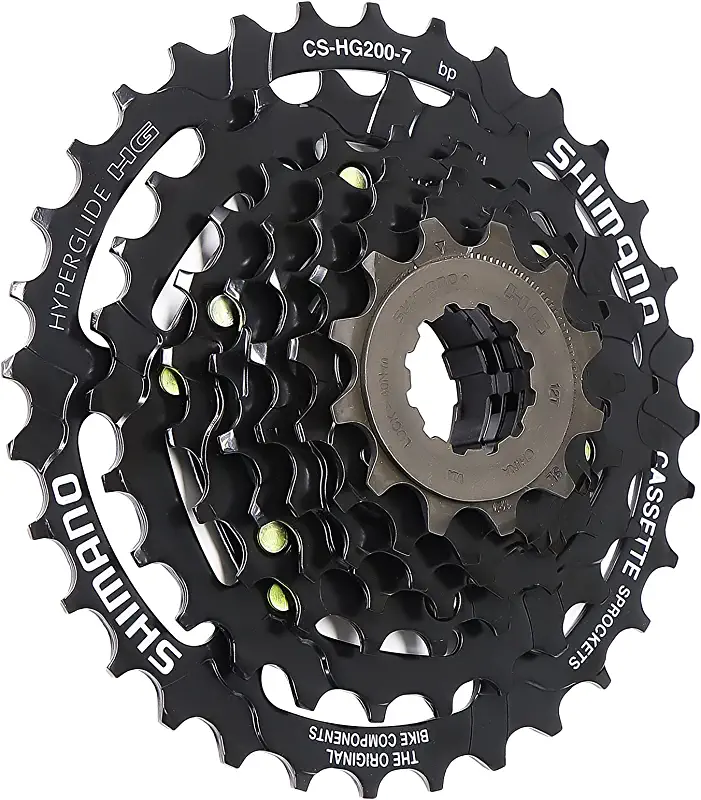
A bicycle cassette is a set of multiple sprockets or gears that are mounted on the rear wheel hub of a bicycle. It is an integral part of the drivetrain system and works in conjunction with the chain and derailleur to enable gear shifting and varying the bike’s speed and effort required to pedal.
The cassette typically consists of several individual sprockets, each with a different number of teeth, arranged in a specific order. The sprockets are usually made of durable materials like steel or aluminum. The number of sprockets on a cassette can vary, with common configurations ranging from 7 to 12 sprockets.
The purpose of the cassette is to provide a range of gear ratios that allow the rider to adapt to different terrain, riding conditions, and personal preferences. The smaller sprockets on the cassette have fewer teeth and are generally used for faster, harder pedaling, providing higher speeds. Conversely, the larger sprockets have more teeth and are used for easier pedaling, suitable for climbing or riding at a slower pace.
When the rider operates the gear shifter on the handlebars, the rear derailleur moves the chain to a different sprocket on the cassette, thereby changing the gear ratio. This allows the rider to select the desired level of resistance and efficiency for pedaling.
Cassettes are available in various gear ratios, such as 11-28T, 11-32T, or 12-25T, indicating the range of teeth on the smallest and largest sprockets. Cassette specifications also usually indicate the number of gears, such as “12-32T, 8 speed”. The specific cassette compatibility depends on the type of drivetrain system used on the bicycle, such as Shimano, SRAM, or Campagnolo, as each brand may have its own cassette design and mounting mechanism.
Upgrading or changing the cassette can have a significant impact on the bike’s overall gear range and performance. Riders often choose cassettes with different gear ratios based on their riding style, terrain, and fitness level to optimize their pedaling experience.
Crankset:
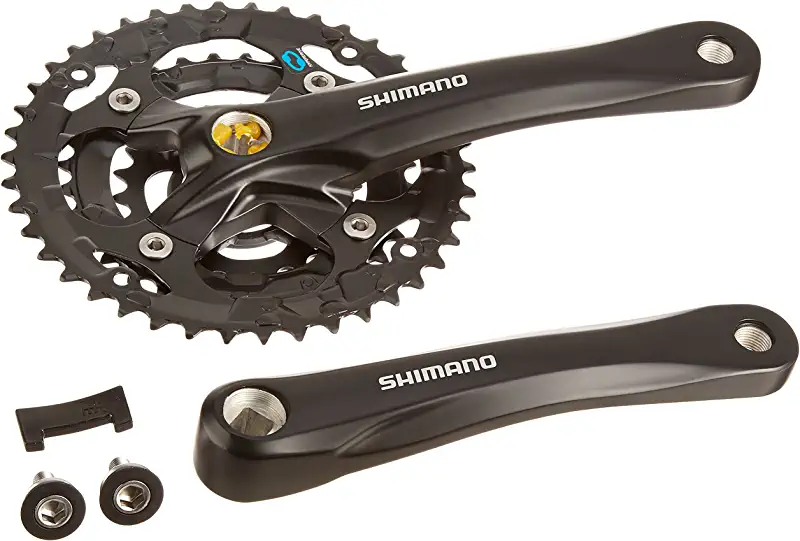
A bicycle crankset, also known as a chainset, is the component of a bicycle that converts the rider’s pedaling motion into rotational power to drive the bicycle forward. It consists of two primary components: the crank arms and the chainrings.
- Crank Arms: The crank arms are the metal arms that connect the pedals to the bottom bracket axle. They extend outward from the bicycle frame and rotate in a circular motion as the rider pedals. The length of the crank arms can vary, typically ranging from 165mm to 180mm, and the choice of crank arm length can affect pedaling efficiency, comfort, and power transfer.
- Chainrings: The chainrings are the toothed rings that are mounted on the crank arms. Most bicycles have a set of two or three chainrings, although some bikes may have a single chainring for simplified drivetrains. The chainrings are typically made of aluminum or steel and come in different sizes, indicated by the number of teeth on each ring.
- The larger chainrings, known as the “outer” or “big” chainring(s), have more teeth and are usually used for higher speeds and harder pedaling efforts.
- The smaller chainrings, known as the “inner” or “small” chainring(s), have fewer teeth and are used for lower speeds and easier pedaling efforts, such as climbing or riding on steep inclines.
- In triple chainring setups, there is often an intermediate-sized chainring between the large and small chainrings, providing a wider range of gear ratios.
The selection of the appropriate crankset depends on factors such as the rider’s riding style, terrain, and personal preferences. Cranksets are available in various configurations, such as double (two chainrings) or triple (three chainrings), with different tooth counts on the chainrings to offer a range of gear ratios. The choice of crankset and gear ratios can affect the bike’s overall speed, climbing ability, and efficiency in different riding conditions.
It’s worth noting that the compatibility of cranksets is dependent on the bicycle’s frame type, bottom bracket standard, and the drivetrain system used, such as Shimano, SRAM, or Campagnolo. These factors should be considered when selecting or replacing a crankset to ensure proper fit and compatibility.
Throttle:
Throttle is the ability of an electric bike to move the bike without the rider pushing the pedals. Not all electric bikes have the ability to throttle.
In the United States, electric bicycles (e-bikes) are categorized into different classes based on their maximum speed and the type of assistance they provide. The classification system helps define the legal requirements and regulations applicable to each class. The three main classes of e-bikes in the United States are:
Class 1: Class 1 e-bikes are equipped with a motor that provides assistance only when the rider is pedaling. The motor assistance cuts off when the bike reaches a speed of 20 miles per hour (32 kilometers per hour). Class 1 e-bikes do not have a throttle and rely solely on pedal-assist. They are allowed on most bike paths and trails where traditional bicycles are permitted.
Class 2: Class 2 e-bikes feature a motor that can provide assistance regardless of whether the rider is pedaling. These e-bikes are equipped with a throttle that allows the rider to engage the motor without pedaling. The maximum speed for motor assistance on Class 2 e-bikes is also limited to 20 miles per hour (32 kilometers per hour). Like Class 1 e-bikes, Class 2 e-bikes are generally permitted on bike paths and trails.
Class 3: Class 3 e-bikes, also known as speed pedelecs, have a motor that provides assistance only when the rider is pedaling, similar to Class 1 e-bikes. However, the maximum speed for motor assistance on Class 3 e-bikes is higher, typically up to 28 miles per hour (45 kilometers per hour). Class 3 e-bikes may have a throttle but it is limited to speeds below 20 miles per hour. Depending on local regulations, Class 3 e-bikes may have additional requirements, such as being equipped with specific safety features. They may be restricted from certain bike paths or require a minimum age to operate.
It’s important to note that e-bike regulations may vary at the state and local level, so it’s advisable to check the specific regulations in your area to ensure compliance with local laws.
Motor Location:
Hub-Drive Motor: Hub-drive motors are located in the hub of either the front or rear wheel. They are the most common type of e-bike motors. Front hub-drive motors provide a balanced weight distribution and simpler installation, while rear hub-drive motors offer better traction and a more natural riding feel. Hub-drive motors are generally quieter and require less maintenance since they don’t interact with the bike’s drivetrain.
Mid-Drive Motor: Mid-drive motors are positioned near the bike’s cranks, where the pedals and chainrings are located. This type of motor offers a lower center of gravity, resulting in improved handling and stability. Mid-drive motors leverage the bike’s gears, allowing for efficient power delivery and better climbing abilities. They provide a more natural riding experience since the motor’s power is directly transmitted to the drivetrain.
Friction Drive Motor: Friction drive motors are typically mounted on top of the rear wheel or tire. They use a roller that contacts the tire and provides propulsion. Friction drive motors are relatively simple and can be added to existing bikes, converting them into e-bikes. However, they may experience increased tire wear and are generally less efficient compared to hub-drive or mid-drive motors.
Integrated Motor: Integrated motors are located within the bike’s frame, often in the downtube or bottom bracket area. These motors are designed to be aesthetically pleasing and provide a more streamlined look. Integrated motors can offer good weight distribution, a low center of gravity, and improved frame stiffness. They are commonly found in higher-end e-bike models.
The choice of motor location depends on various factors, including the e-bike’s intended use, riding style, and personal preferences. Hub-drive motors are popular for urban commuting and recreational riding, while mid-drive motors are preferred for off-road adventures and hilly terrain. Friction drive motors are often used for e-bike conversion kits. Integrated motors are typically seen in premium e-bike models that prioritize design and integration.
Understanding E-Bike Battery Specs
When evaluating e-bike performance, battery specifications are just as important as motor power or frame design. The battery determines how far you can go, how fast you can get there, and how long you’ll wait between charges.
⚡ Key Battery Terms to Know
- Voltage (V): Determines the potential power output. Common e-bike voltages include 36V, 48V, and 52V. Higher voltage generally supports faster speeds and more torque.
- Amp-Hours (Ah): Indicates the battery’s capacity—how much charge it can hold. More amp-hours = longer ride time.
- Watt-Hours (Wh): The most accurate measure of battery energy. Calculated as Volts × Amp-Hours. A 48V 10Ah battery, for example, has 480Wh.
🛣️ What It Means for Real-World Riding
- A battery rated around 500Wh will typically provide 20–40 miles of range, depending on rider weight, terrain, pedal assist level, and wind.
- E-bikes with larger batteries (750Wh or more) are better for longer commutes, cargo hauling, or off-road adventures.
🛠️ Battery Tips for Buyers
- Look for removable batteries for easier charging and replacement
- Check for quality cells (e.g., Samsung, LG, Panasonic)
- Choose a battery that matches your riding style: larger capacity for range, higher voltage for performance

